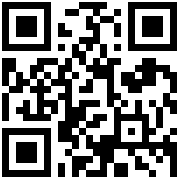The non-woven bag manufacturers of foreign trade share with you the printing method of the non-woven bag as follows:
The printing of non-woven bags can be generally divided into the following types:
I. Watermark: Water-based glue screen printing, which is named because it uses water-based elastic glue as the printing medium. It is more common in textile printing, also called printing. Blend color paste and water-based elastomer during printing. When printing plates are used, no chemical solvent is needed, and they can be washed directly with water. It is characterized by good tinting strength, strong covering and fastness, washing resistance, basically no odor, and is absolutely environmentally friendly printing.
2. Gravure printing: The finished product processed by this method is usually called a coated non-woven bag. This process is divided into two steps, that is, the traditional printing process is used to print the graphics on the PP film, and then the laminating process is used to compound the patterned film on the non-woven fabric. Generally, non-woven bags printed with large-area color patterns use this process. Its characteristics are exquisite printing, machine production throughout, short production cycle. In addition, the product has excellent waterproof performance, and the durability of the finished product is better than non-woven bags produced by other processes. The film has two kinds of light and matte to choose from, matte has a matte effect!
3. Letterpress printing: Printing using letterpress (a raised printing plate with graphic parts). Referred to as embossing. Is one of the main printing methods. The longest history. Engraving printing The engraving printing technology was invented in the early years of the Tang Dynasty. It was the engraving of text or images on wooden boards, removing the parts of the graphics to make the graphics protrude, and then manually applying ink and covering with paper. This is the most primitive method of embossing. Today, letterpress printing uses rubber laser engraving, then machine brushing, and printing on non-woven fabrics is particularly common. Its characteristics are faster and cheaper than silk screen printing. However, the shortcomings are also very stark. The printing ink is relatively thin, especially when printing on dark non-woven fabrics, the color is not as obvious as silk screen printing.
4. Thermal transfer: Thermal transfer is a special printing in printing. This method requires an intermediate medium, that is, the graphics are printed on a thermal transfer film or thermal transfer paper, and then the pattern is transferred by heating the transfer device. Onto the non-woven fabric. A commonly used medium in textile printing is a thermal transfer film. Its advantages are: exquisite printing, rich gradation, comparable to photos. Suitable for small area color image printing. The disadvantages are high prices and high printing costs.
V. Sublimation: Sublimation transfer refers to the printing process of transferring dyes to non-woven fabric via transfer paper. It is based on the sublimation characteristics of some disperse dyes. The disperse dyes that are sublimated at 150 ~ 230 ° C are selected, mixed with the paste to make "color inks", and then the "color inks" are printed on the basis of different design patterns. On the transfer paper, then the transfer paper printed with the pattern pattern is in close contact with the non-woven fabric. Under the control of a certain temperature, pressure and time, the dye is transferred from the printing paper to the fabric, and then enters the non-woven fabric through diffusion. Inside to achieve the purpose of coloring. It is characterized by full color printing on non-woven fabrics. The printing effect is exquisite, comparable to offset printing on paper, and absolutely environmentally friendly. However, the price is relatively high, and it can only be printed on PE non-woven fabrics.
下一条: No Information
Related Industry Knowledge
- Ultrasonic non-woven bag manufacturers share with you the difference between non-woven cloth and other non-woven cloth
- Foreign trade non-woven bags also have environmental protection public welfare value
- Product Features of Cold Meal Insulation Breast Milk Bag
- Why choose foreign trade non-woven bags for packaging
- Material characteristics and characteristics of non-woven bags for foreign trade
- Foreign trade non-woven bags are divided into different types according to the production process
- Development trend of foreign trade non-woven bags
- Pet habitat litter manufacturers teach you how to solve dogs not sleeping litter
- Product features of drawstring bag




